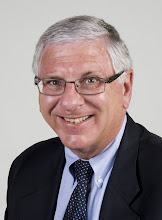Government survey shows 38 percent of adults and 12 percent of children use complementary and alternative medicine
Approximately 38 percent of adults in the United States aged 18 years and over and nearly 12 percent of U.S. children aged 17 years and under use some form of complementary and alternative medicine (CAM), according to a new nationwide government survey.* This survey marks the first time questions were included on children's use of CAM, which is a group of diverse medical and health care systems, practices, and products such as herbal supplements, meditation, chiropractic, and acupuncture that are not generally considered to be part of conventional medicine.
The survey, conducted as part of the 2007 National Health Interview Survey (NHIS), an annual study in which tens of thousands of Americans are interviewed about their health- and illness-related experiences, was developed by the National Center for Complementary and Alternative Medicine (NCCAM), a part of the National Institutes of Health (NIH) and the National Center for Health Statistics (NCHS), a part of the Centers for Disease Control and Prevention (CDC). The survey included questions on 36 types of CAM therapies commonly used in the United States—10 types of provider-based therapies, such as acupuncture and chiropractic, and 26 other therapies that do not require a provider, such as herbal supplements and meditation.
"The 2007 NHIS provides the most current, comprehensive, and reliable source of information on Americans' use of CAM," said Josephine P. Briggs, M.D., director of NCCAM. "These statistics confirm that CAM practices are a frequently used component of Americans' health care regimens, and reinforce the need for rigorous research to study the safety and effectiveness of these therapies. The data also point out the need for patients and health care providers to openly discuss CAM use to ensure safe and coordinated care."
The 2007 survey results, released in a National Health Statistics Report by NCHS, are based on data from more than 23,300 interviews with American adults and more than 9,400 interviews with adults on behalf a child in their household. The 2007 survey is the second conducted by NCCAM and NCHS—the first was done as part of the 2002 NHIS.**
CAM Use Among Adults
Comparison of the data from the 2002 and 2007 surveys suggests that overall use of CAM among adults has remained relatively steady—36 percent in 2002 and 38 percent in 2007. However, there has been substantial variation in the use of some specific CAM therapies, such as deep breathing, meditation, massage therapy, and yoga, which all showed significant increases.
The most commonly used CAM therapies among U.S. adults were
Nonvitamin, nonmineral, natural products (17.7 percent) Most common: fish oil/omega 3/DHA, glucosamine, echinacea, flaxseed oil or pills, and ginseng***
Deep breathing exercises (12.7 percent)
Meditation (9.4 percent)
Chiropractic or osteopathic manipulation (8.6 percent)
Massage (8.3 percent)
Yoga (6.1 percent).
Adults used CAM most often to treat pain including back pain or problems, neck pain or problems, joint pain or stiffness/other joint condition, arthritis, and other musculoskeletal conditions. Adult use of CAM therapies for head or chest colds showed a marked decrease from 2002 to 2007 (9.5 percent in 2002 to 2.0 percent in 2007).
Consistent with results from the 2002 data, in 2007 CAM use among adults was greater among:.
Women (42.8 percent, compared to men 33.5 percent)
Those aged 30-69 (30-39 years: 39.6 percent, 40-49 years: 40.1 percent, 50-59 years: 44.1 percent, 60-69 years: 41.0 percent)
Those with higher levels of education (Masters, doctorate or professional: 55.4 percent)
Those who were not poor (poor: 28.9 percent, near poor: 30.9 percent, not poor: 43.3 percent)
Those living in the West (44.6 percent)
Those who have quit smoking (48.1 percent)
CAM Use Among Children
Overall, CAM use among children is nearly 12 percent, or about 1 in 9 children. Children are five times more likely to use CAM if a parent or other relative uses CAM. Other characteristics of adult and child CAM users are similar—factors such as socioeconomic status, geographic region, the number of health conditions, the number of doctor visits in the last 12 months, and delaying or not receiving conventional care because of cost are all associated with CAM use.
Among children who used CAM in the past 12 months, CAM therapies were used most often for back or neck pain, head or chest colds, anxiety or stress, other musculoskeletal problems, and Attention Deficit/Hyperactivity Disorder (ADD/ADHD).
The most commonly used CAM therapies among children were
Nonvitamin, nonmineral, natural products (3.9 percent) Most common: echinacea, fish oil/omega 3/DHA, combination herb pill, flaxseed oil or pills, and prebiotics or probiotics
Chiropractic or osteopathic manipulation (2.8 percent)
Deep breathing exercises (2.2 percent)
Yoga (2.1 percent).
"The survey results provide information on trends and a rich set of data for investigating who in America is using CAM, the practices they use, and why," said Richard L. Nahin, Ph.D., MPH, acting director of NCCAM's Division of Extramural Research and co-author of the National Health Statistics Report. "Future analyses of these data may help explain some of the observed variation in the use of individual CAM therapies and provide greater insights into CAM use patterns among Americans."
Thursday, December 11, 2008
Subscribe to:
Post Comments (Atom)


1 comment:
Thank you! Your help is appreciated, Very very interesting article. Thanks for collecting and providing so much info. I am a 54 year old man and I had problems of erectile dysfunction but it already was a stage closed in my life but I find the solution, I bought generic viagra in Online Pharmacy the is the best option to buy Viagra you only must go to the computer and ready!! Be happy and do happy your wife The unsatisfactory sex makes the woman feel inadequate. Choose Generic Viagra and boost your sex-life into the orbit!!!
Post a Comment